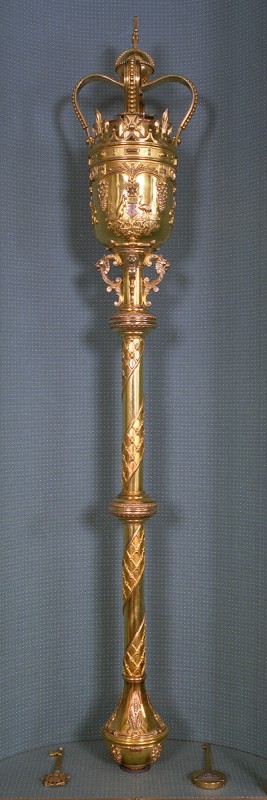Why must the mace be present? Why did the make it a mace? Why not a sword? Is the mace a symbol of power?
The Mace

DPS Auspic
Description
The Mace is a gold-coated ceremonial object used in the House of Representatives. The Mace has a crown on the top and other symbols such as the Australian Coat-of-Arms featured on it. When the House is not in session, the Mace is kept in the Speaker's office.
Permission should be sought from DPS AUSPIC for third-party or commercial uses of this image. To contact DPS AUSPIC email: auspic@aph.gov.au or phone: 02 6277 3342.
Thanks for your questions about the Mace.
The Mace is the symbol of the authority of the House of Representatives and the Speaker of the House of Representatives.
At the start of each sitting day in the House of Representatives, the Mace is carried into the House by the Serjeant-at-Arms who places it on the central table. The crown of the Mace always points to the government side of the House and the Australian Coat-of-Arms faces up. The Mace sits on the central table as long as the House is officially meeting and the Speaker or a deputy is present.
When not in use, the Mace is kept in a glass cabinet in the Speaker's office.
In medieval times, the royal Serjeants-at-Arms carried a mace stamped with the Royal Arms. This was a weapon used to assert the authority of the monarch. By 1415, the House of Commons in the British Parliament had appointed its own Serjeant-at-Arms to serve the members of the House. The tradition of the Mace in the House of Representatives is taken from this practice in the House of Commons.